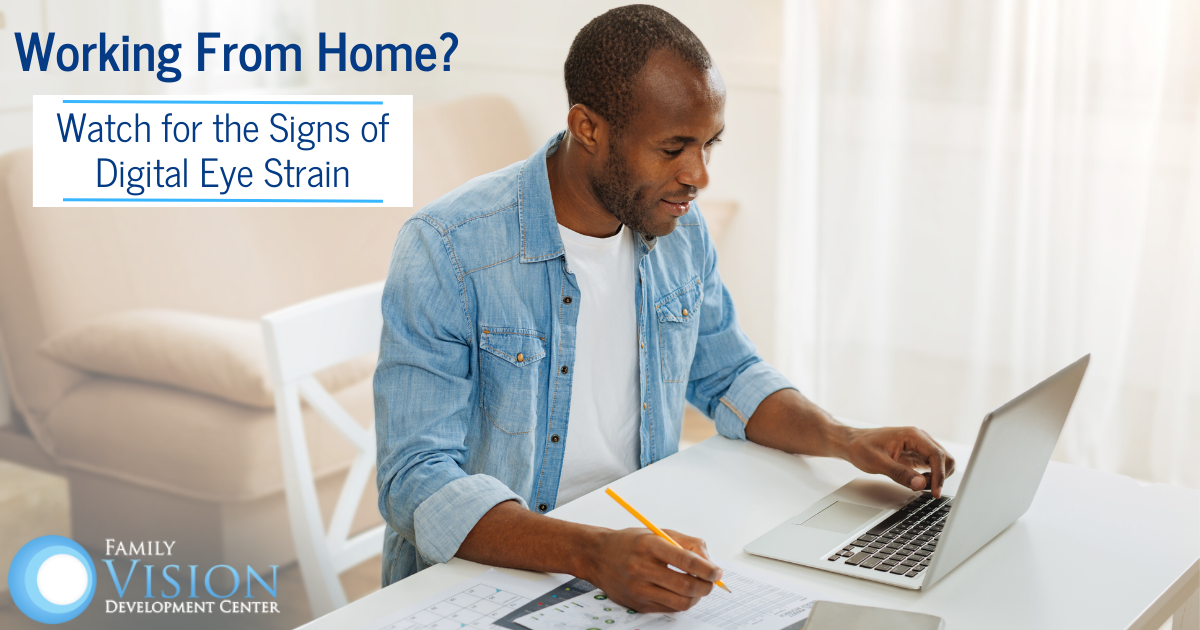The COVID-19 pandemic caused people to go remote in record numbers. Remote learning in schools and working from home, communicating through the use of digital screens, became the standard way to operate. While things have slowly started to return to in-person, many people still increasingly rely on their digital devices on a daily basis. This, unfortunately, has led to more people experiencing the effects of digital eye strain.
Why Digital Eye Strain Occurs
Digital eye strain, also known as Computer Vision Syndrome (CVS), is a group of vision-related problems that are caused by prolonged use of electronics such as computers, tablets, e-readers or smartphones. Eye discomfort and vision problems seem to increase the longer a person views these screens. The severity of the vision problems can vary from person to person, and can depend on the specific conditions that are present. For example, factors such as lighting, distance from the screen, length of time in front of the screen, the amount of glare on the screen, poor posture and underlying vision problems can all affect a person’s overall symptoms.
Symptoms
Digital eye strain can result in any of the following:
- Headaches
- Blurred or double vision
- Dry eyes or watery eyes
- Neck and shoulder pain
- Sore or tired eyes
- Light sensitivity
Prevention and Treatment
Luckily, digital eye strain is not a permanent condition. In fact, there are a number of ways to lessen the effects, eliminate the symptoms or even avoid it altogether.
- Take frequent breaks when working on or looking at digital screens. It is good practice to follow the 20-20-20 rule – after 20 minutes on a digital device, look 20 feet into the distance for at least 20 seconds. You should also give your eyes a full 15-minute rest after each 2-hour period of digital screen use.
- Adjust seat and screen positions appropriately. The center of the screen should be 4-5 inches (15-20 degrees) below eye level, and 20-28 inches away from your eyes. Your seat should be positioned so you can sit comfortably with your back straight and your feet resting flat on the floor.
- Reduce glare on the screen. Adjust the lighting in the room from overhead lights or windows to eliminate as much glare as possible from the screen. If that is not possible, try using a screen glare filter to reduce the amount of light being reflected from the screen.
- Get underlying vision conditions diagnosed and treated. Prior vision conditions are a main cause of more severe cases of digital eye strain. Therefore, treating these conditions can help to relieve serious symptoms. You should also make sure your glasses or contacts are always fitted with current, appropriate prescription lenses.
- Vision therapy treatment. If symptoms of digital eye strain persist or do not subside with preventative measures, vision therapy can be an effective treatment option. This type of therapy consists of a series of eye exercises that retrain the eyes and brain to work together more effectively. Each program is customized to correct the specific visual deficiencies for each patient.
Get Regular Vision Exams
Symptoms of digital eye strain can get worse if not treated in a timely manner. And while you might not be able to avoid working in a remote environment, you can take the appropriate actions to reduce or avoid the symptoms of digital eye strain. An important step is to get regular vision exams in order to make sure current prescription lenses are up-to-date, as well as ensure early diagnosis of any new vision issues. At Family Vision Development Center, we work with patients of all ages to help reduce the effects of digital eye strain and maintain good overall eye health. Contact our office at 630-862-2020 to schedule an appointment or to learn more.

